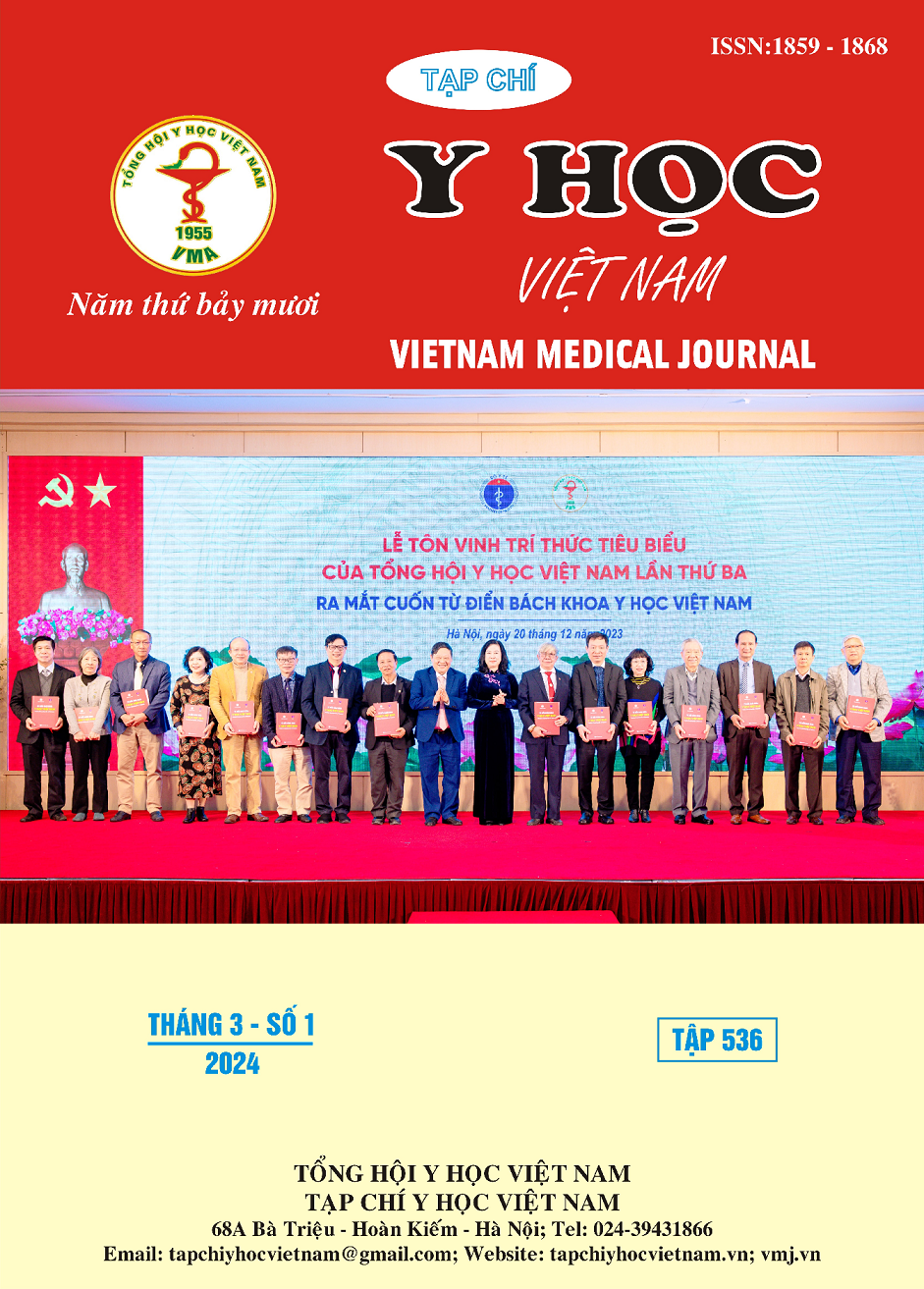BOTANICAL SURVEY AND ANTI-BACTERIAL AND ANTI-FUNGAL EFFECTS OF ESSENTIAL OILS IN PALMAROSA [CYMBOPOGON MARTINI (ROXB.) WILL. WATSON, POACEAE]
Main Article Content
Abstract
Background: Palmarosa [Cymbopogon martini (Roxb.) Will. Watson] belongs to the Poaceae family with a long-lasting rose fragrance in India. Palmarosa essential oils has antibacterial, antifungal and antioxidant effects on the skin that help reduce the risk of chronic diseases. The chemical composition of essential oils are geraniol, geranyl acetate and linalool. In Vietnam, there are very few studies on the morphological and anatomical characteristics of this species as well as antibacterial and antifungal activity. Therefore, this study aims to describe and determine the microbiological characteristics and medicinal powder as the basis for identification, testing of palmarosa species and demonstrates antibacterial and antifungal activity of essential oils. Objectives: Researching morphological, anatomical and traditional powder of palmarosa [C. martini (Roxb.) Will. Watson] to contribute to the correct identification of this species. Test the antibacterial and antifungal activity of essential oils. Methods: Collecting fresh plant samples of palmarosa [C. martini (Roxb.) Will. Watson]. Analyzing, describing, photographing the morphological and anatomical characteristics. Testing the antibacterial and antifungal activity of essential oils in rose lemongrass leaves (determining MIC by agar dilution method). Results: Morphological characteristics of palmarosa [C. martini (Roxb.) Will. Watson]: Herbs live for many years. Leaves are alternate, arranged in 2 stalkless rows. The inflorescence is a flower spike, the flower spike grows in pairs. Flowers bare, bisexual, growing in the lower husk. Anatomy: Roots have a U-shaped endoderm, consisting of 1 layer of rectangular cells, 50 xylem and phloem interspersed. Stems have a thick cuticle in the epidermis, many xylem and phloem in a vascular bundle, and parenchyma tissue shells contain cells containing essential oils. The midrib is 1.5 times thicker the leaf blade. Traditional powder: Pointed feathers on the calyx, pollen grains, parenchyma tissue, cuticle fragments, fibers, veins vessel and spirals vessel. The activity of essential oils on Propionibacterium acnes and Aspergillus niger has MIC values of 0.016% and 0.004%, respectively. Conclusion: The morphological and anatomical characteristics of palmarosa [C. martini (Roxb.) Will. Watson] that helps to identify species more exactly. The activity of essential oils on Propionibacterium acnes and Aspergillus niger with MIC values of 0.016% and 0.004%, respectively, helps guide research on Palmarosa.
Article Details
References
2. Phạm Thanh Kỳ (2011), Dược liệu học tập 2, Nhà xuất bản Y học, Hà Nội, tr. 212–213.
3. Trương Thị Đẹp (2007), Thực vật Dược, NXB Giáo dục, Hà Nội, tr. 300–303.
4. Võ Văn Chi (2003), Từ điển thực vật thông dụng, tập 1, NXB Khoa học–Kỹ thuật, Hà Nội, tr. 850–855.
5. “Cymbopogon martini (Roxb.) Will. Watson”, The plant list, March. 23, 2012. [Online], Available: http://www.theplantlist.org/ tpl1.1/record/kew-406214. [Accessed: July. 02, 2022].
6. Mei-Lin T., Chih-Chien L., Wei-Chao L., et al. (2011), "Antimicrobial, antioxidant, and anti-inflammatory activities of essential oils from five selected herbs", Biosci. Biotechnol. Biochem., 75(10), 1977–1983.
7. Shou-liang Chen and Sylvia M. Phillips, “Cymbopogon Sprengel”, Flora of China, 22, 624.
8. Suman P. S. K., Ajit K. S., Anubha P., et al. (2005), “Essential oil constituents and RAPD markers to establish species relationship in Cymbopogon Spreng. (Poaceae)”, Biochemical Systematics and Ecology, 33, 171–186.


